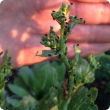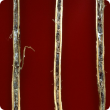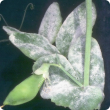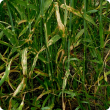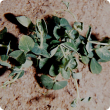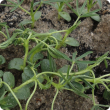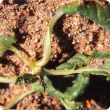Crops
The Department of Primary Industries and Regional Development continues to support the growth and international competitiveness of all crop industries in Western Australia.
With a 2400 kilometre span from its tropical north to its temperate south, WA supports a broad range of cropping industries from rain-fed winter cereals through to irrigated horticultural crops.
In the 2012/13 year the WA cropping industries exported a total of $3.9 billion which comprised: $3.1 billion of cereals, $859 million of pulses, pastures and oilseeds, $142 million of horticultural crops. The major contributors to these exports were wheat ($2.7 billion), canola ($756 million), barley ($377 million), lupins ($42 million), carrots at $48 million, oats ($12 million), and strawberries at $5.5 million.
Filter by search
Filter by topic
- (-) Remove Pests, weeds & diseases filter Pests, weeds & diseases
- Grains (551) Apply Grains filter
- Diseases (494) Apply Diseases filter
- Fungi (375) Apply Fungi filter
- Crop diseases (369) Apply Crop diseases filter
- Pulses (262) Apply Pulses filter
- Field peas (252) Apply Field peas filter
- Horticulture (164) Apply Horticulture filter
- Pests (156) Apply Pests filter
- Pest insects (113) Apply Pest insects filter
- Canola (107) Apply Canola filter
- Control methods (93) Apply Control methods filter
- Chemicals (77) Apply Chemicals filter
- Biosecurity & quarantine (72) Apply Biosecurity & quarantine filter
- Grains research & development (70) Apply Grains research & development filter
- Fruit (69) Apply Fruit filter
- Vegetables (66) Apply Vegetables filter
- Biosecurity (65) Apply Biosecurity filter
- Plant biosecurity (61) Apply Plant biosecurity filter
- Wheat (55) Apply Wheat filter
- Weeds (55) Apply Weeds filter
- Lupins (47) Apply Lupins filter
- Crop weeds (46) Apply Crop weeds filter
- Herbicides (42) Apply Herbicides filter
- Barley (38) Apply Barley filter
- Potatoes (36) Apply Potatoes filter
- Grapes & wine (30) Apply Grapes & wine filter
- Viruses & virus-like (26) Apply Viruses & virus-like filter
- Oats (22) Apply Oats filter
- Citrus (22) Apply Citrus filter
- Mechanical, physical and cultural (20) Apply Mechanical, physical and cultural filter
- Livestock & animals (18) Apply Livestock & animals filter
- Table grapes (18) Apply Table grapes filter
- Nursery & cutflowers (17) Apply Nursery & cutflowers filter
- Climate, land & water (17) Apply Climate, land & water filter
- Cabbage (16) Apply Cabbage filter
- Pastures (15) Apply Pastures filter
- Fungicides (15) Apply Fungicides filter
- Nematodes (14) Apply Nematodes filter
- Wine grapes (14) Apply Wine grapes filter
- Production & postharvest (13) Apply Production & postharvest filter
- Mites & spiders (13) Apply Mites & spiders filter
- Pome fruit (13) Apply Pome fruit filter
- Stone fruit (11) Apply Stone fruit filter
- Bacteria (10) Apply Bacteria filter
- Cauliflower (9) Apply Cauliflower filter
- Carrots (8) Apply Carrots filter
- Broccoli (8) Apply Broccoli filter
- Brussels sprouts (8) Apply Brussels sprouts filter







